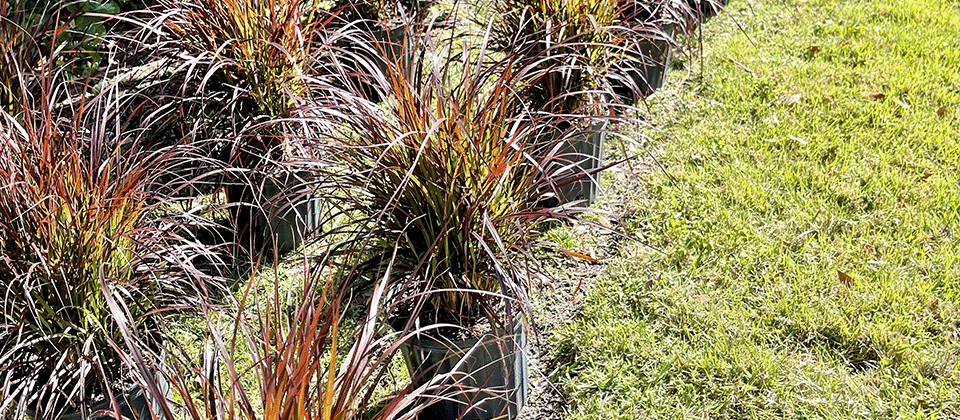Soil types in Florida vary, each with distinct characteristics that influence land use, agriculture, and gardening. Check out this map of Florida soil types and read below for a description of each.
Sandy Soils
Sandy soils are the most prevalent in Florida. They are well-draining but low in nutrients and organic matter. Sandy soils often feel gritty and can dry out quickly, requiring frequent irrigation. Sandy soils are found throughout the state, especially in coastal regions and the central ridge areas.
Planting considerations: Regular watering and the addition of organic matter (like compost and mulch) can help improve fertility and moisture retention.
Loamy Soils
Loamy soils are a balanced mix of sand, silt, and clay. They are fertile, with good drainage and moisture retention, making them ideal for most types of plants. Loamy soils are easier to work with than sandy or clay soils. This type of soil is less common than sandy soil, but can be found in some agricultural areas, particularly in northern Florida.
Planting considerations: Loamy soils are excellent for gardening, requiring minimal amendments.
Clay Soils
Clay soils consist of very fine particles that compact easily. They retain water and nutrients well but have poor drainage, which can lead to waterlogging. Clay soils can be heavy and hard to work with, especially when wet. Clay soils are commonly found in parts of North and Central Florida.
Planting considerations: Adding organic matter can improve drainage and make the soil easier to work. Raised beds may also be beneficial.
Muck Soils
Muck soils are rich in organic material and have a dark, almost black appearance. They form in wetland areas from the accumulation of decayed plant material and are highly fertile. Muck soils are ideal for growing vegetables and other crops but can be prone to subsidence when drained. Muck soils are commonly found in the Everglades, Lake Okeechobee area, and other low-lying regions, especially in South Florida.
Planting considerations: Excellent for agriculture but may require careful water management to prevent flooding or subsidence.
Limestone-Based Soils
These soils are formed over limestone bedrock and are often shallow and rocky. Limestone soils can be alkaline (high pH) and may contain high levels of calcium. They drain well but can be nutrient-poor. These are often found in the Florida Keys, Miami-Dade County, and parts of the Panhandle.
Planting considerations: Use plants that are tolerant of alkaline conditions, and consider adding organic matter or fertilizers to improve nutrient levels.
Peat Soils
Peat soils are rich in organic material, similar to muck, but with a higher moisture content. They are very fertile and retain water well, often forming in swampy areas. Peat soils are acidic and can be challenging to work with due to their high water content. Peat soils are commonly found in some wetlands, especially in South Florida.
Planting considerations: These soils are great for acid-loving plants. Drainage management may be necessary.
Silt Soils
Silt soils have smaller particles than sand but larger than clay, giving them a smooth, slippery texture when wet. They retain moisture and nutrients better than sandy soils but may have poor drainage. Silt soils are commonly found along riverbanks and floodplains.
Planting considerations: Adding organic matter can improve the structure and drainage of silt soils, making them more suitable for a wide range of plants.
Understanding the type of soil in your area is crucial for successful landscaping, gardening, and farming. Each soil type has its strengths and challenges, so tailoring your approach to your specific soil conditions will help you achieve the best results.

